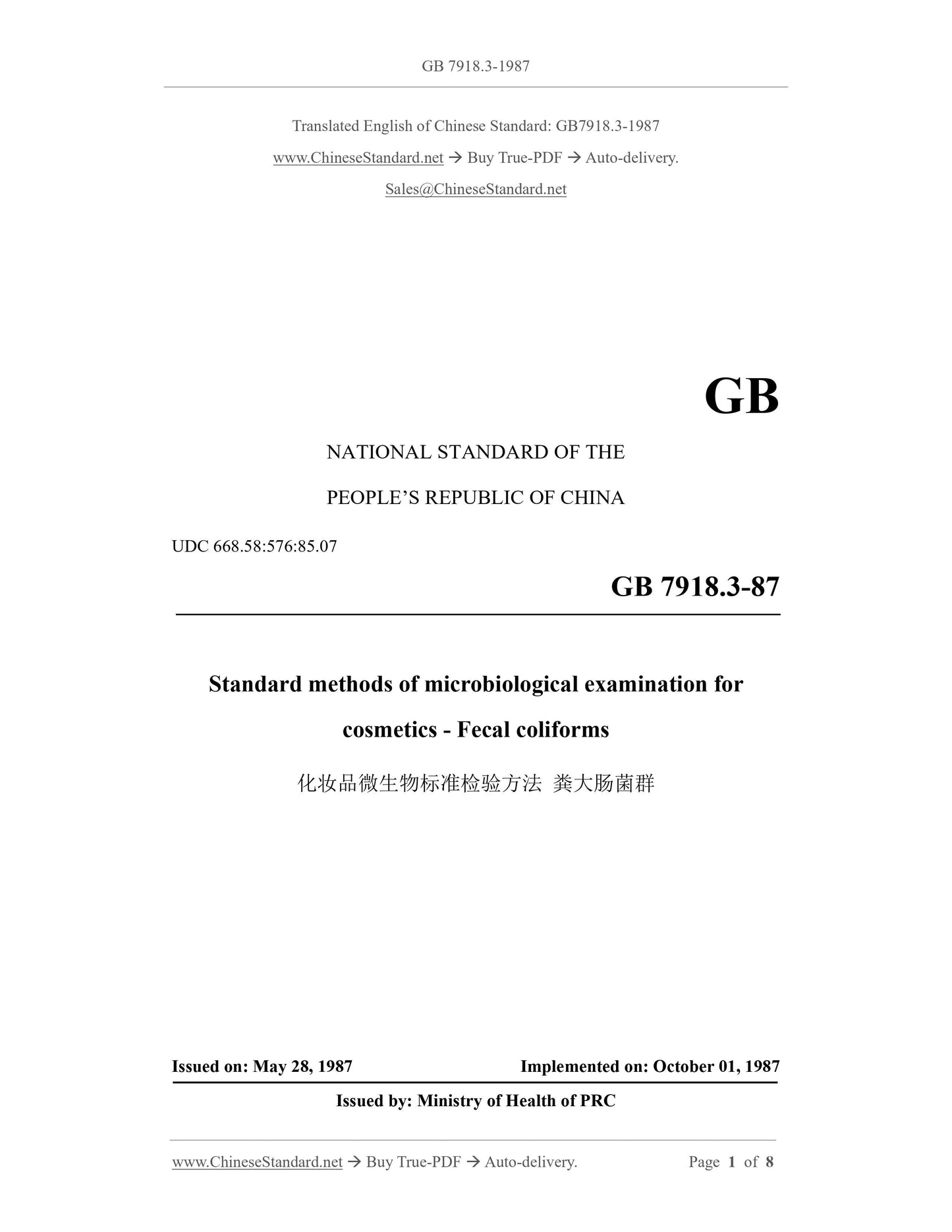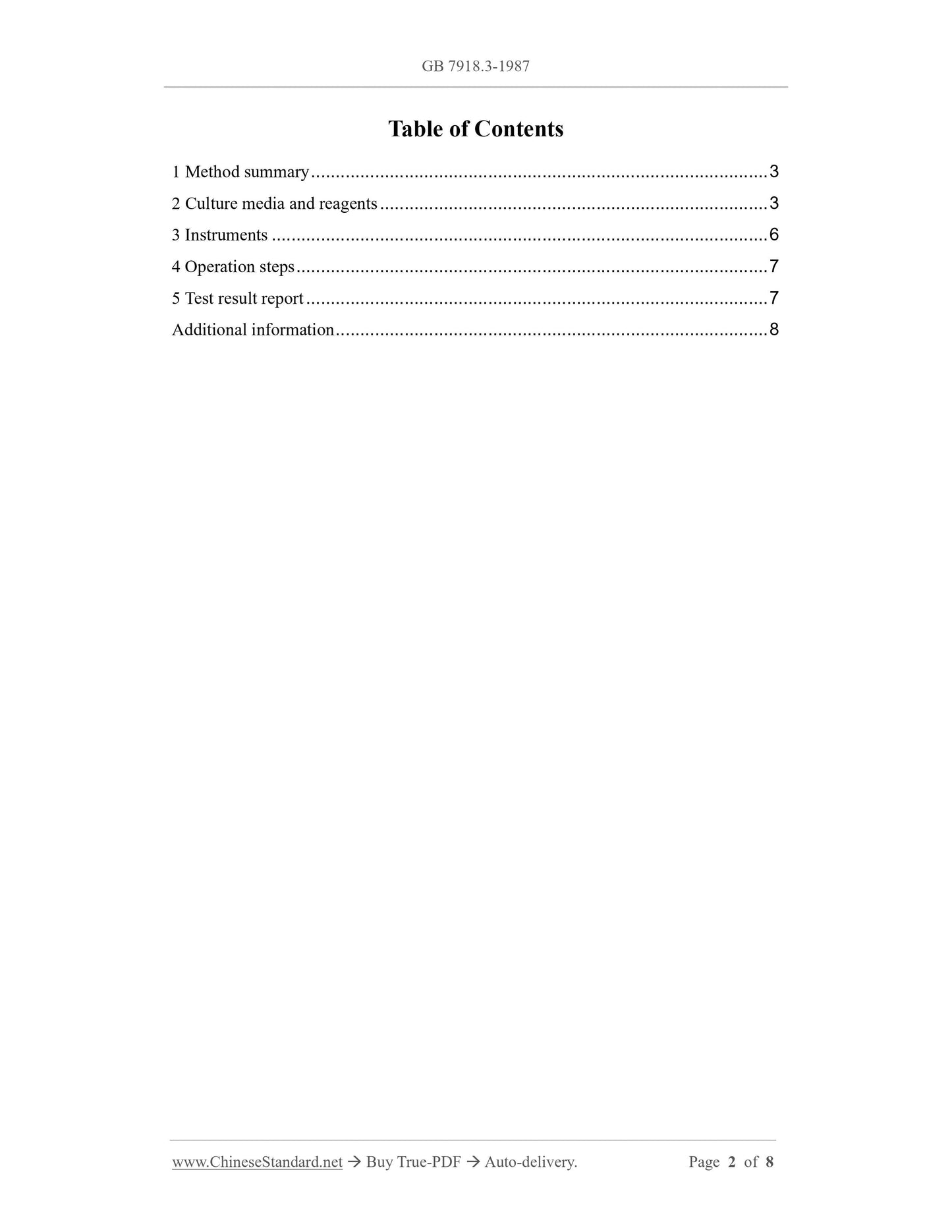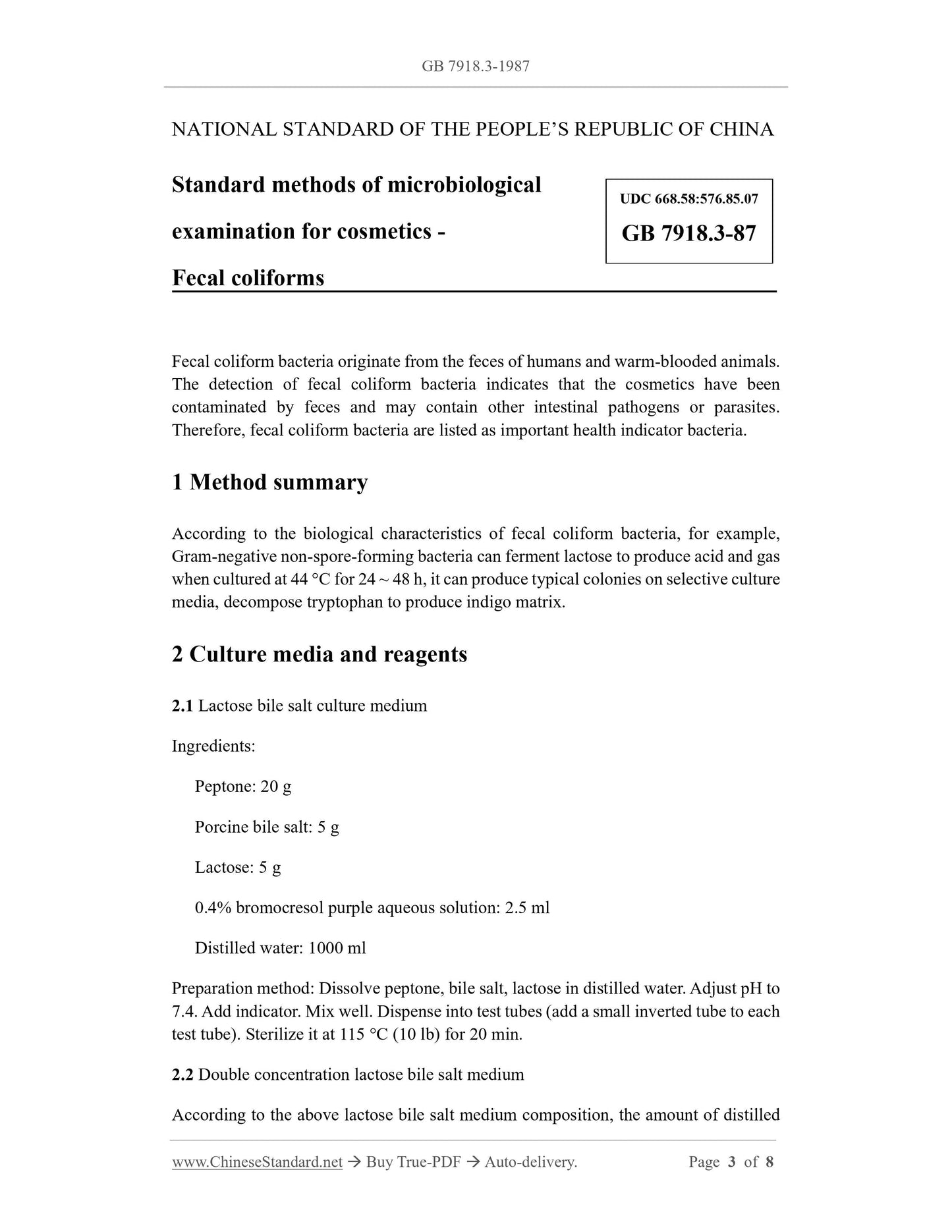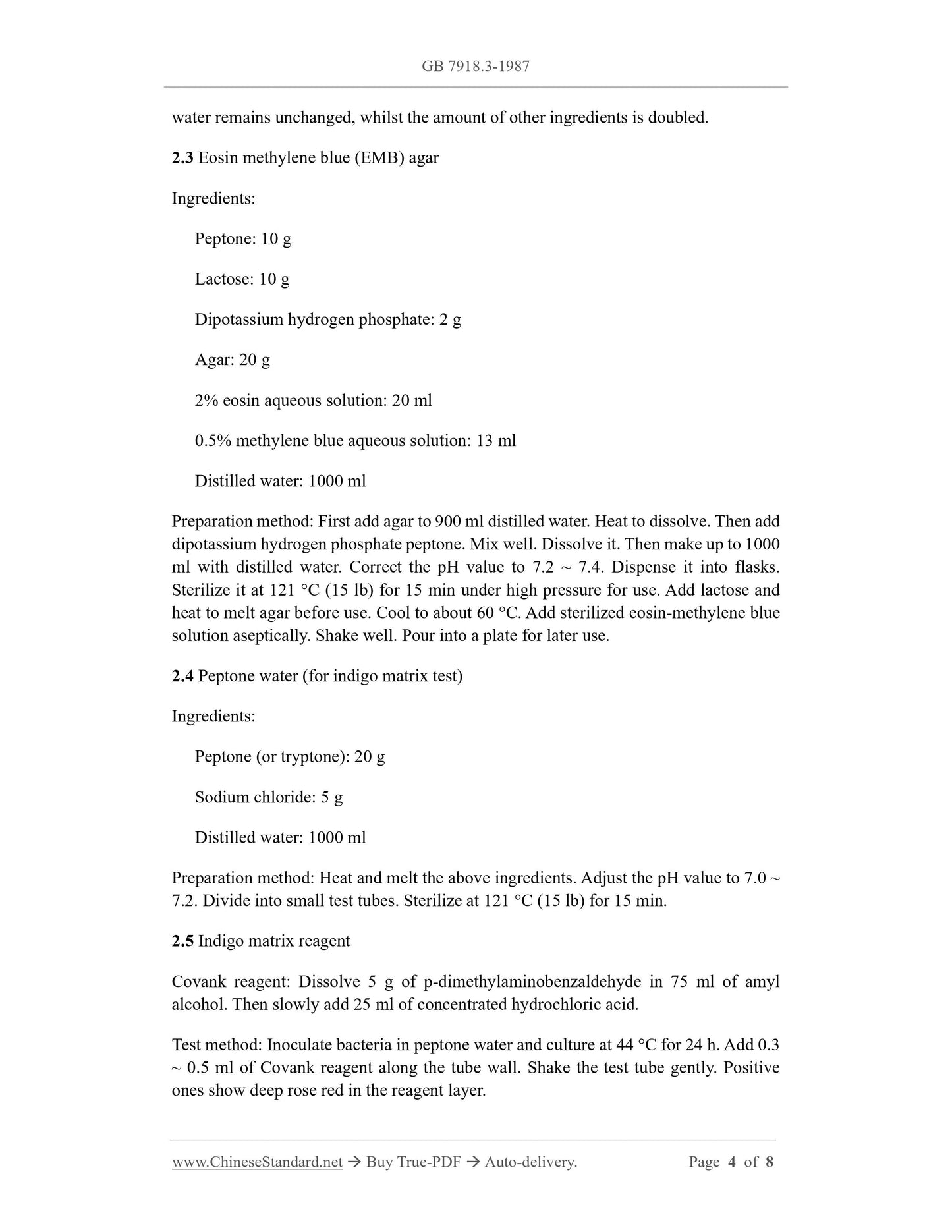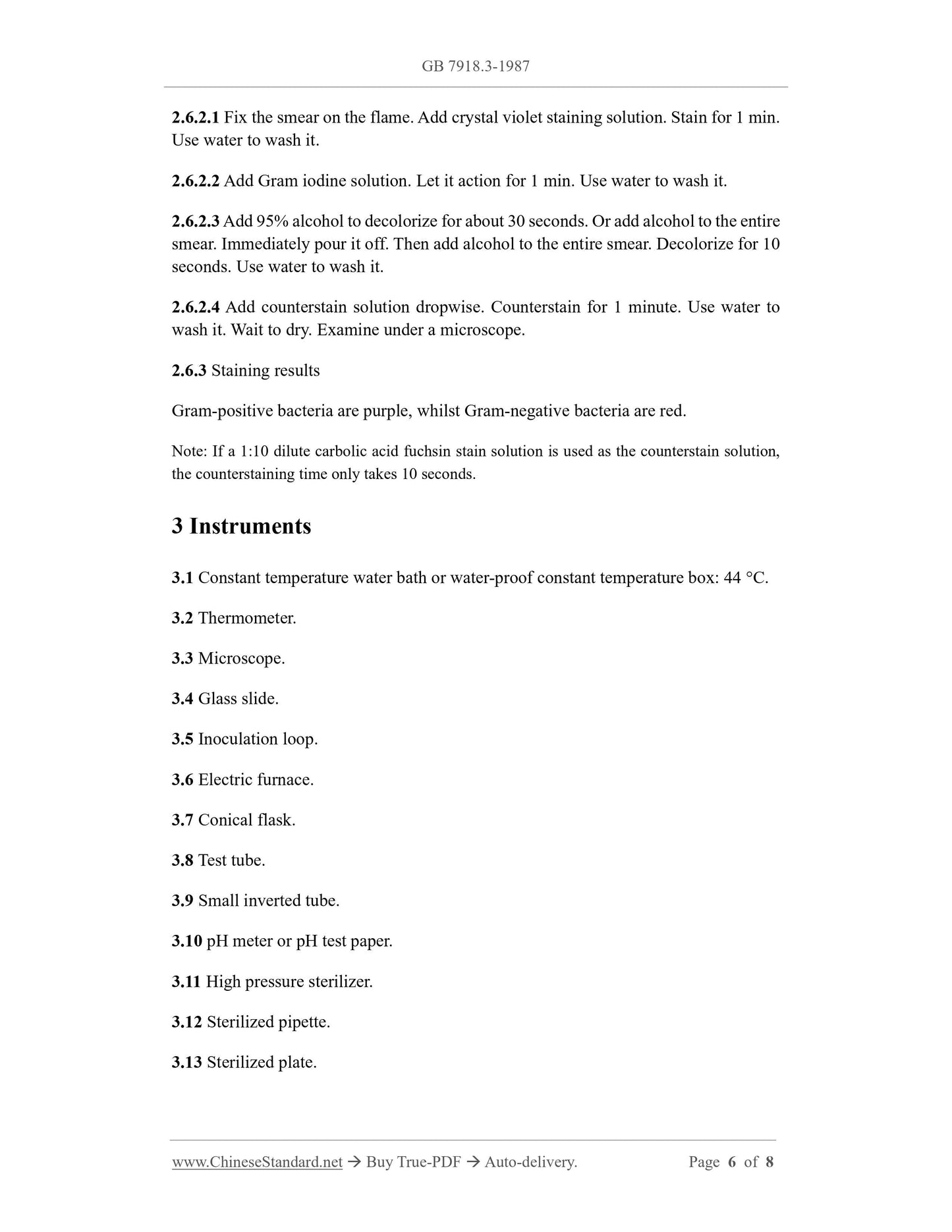1
/
of
5
www.ChineseStandard.us -- Field Test Asia Pte. Ltd.
GB/T 7918.3-1987 English PDF (GB/T7918.3-1987)
GB/T 7918.3-1987 English PDF (GB/T7918.3-1987)
Regular price
$85.00
Regular price
Sale price
$85.00
Unit price
/
per
Shipping calculated at checkout.
Couldn't load pickup availability
GB/T 7918.3-1987: Standard methods of microbiological examination for cosmetics. Fecal coliforms
Delivery: 9 seconds. Download (and Email) true-PDF + Invoice.Get Quotation: Click GB/T 7918.3-1987 (Self-service in 1-minute)
Newer / historical versions: GB/T 7918.3-1987
Preview True-PDF
Scope
According to the biological characteristics of fecal coliform bacteria, for example,Gram-negative non-spore-forming bacteria can ferment lactose to produce acid and gas
when cultured at 44 °C for 24 ~ 48 h, it can produce typical colonies on selective culture
media, decompose tryptophan to produce indigo matrix.
Basic Data
| Standard ID | GB/T 7918.3-1987 (GB/T7918.3-1987) |
| Description (Translated English) | Standard methods of microbiological examination for cosmetics. Fecal coliforms |
| Sector / Industry | National Standard (Recommended) |
| Classification of Chinese Standard | C51 |
| Classification of International Standard | 71.100.70 |
| Word Count Estimation | 3,347 |
| Date of Issue | 5/28/1987 |
| Date of Implementation | 10/1/1987 |
| Issuing agency(ies) | Ministry of Health of the People Republic of China |
Share
